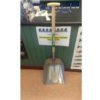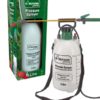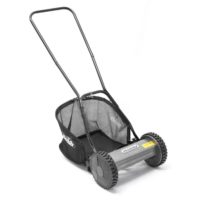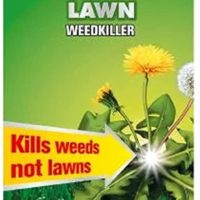The Importance of Watering
Quenching Their Thirst
Once your garden has been planted, nothing is more important to its ability to thrive than water. When provided too little water, plants are unable to develop properly and become more susceptible to damage from pests. Too much water can of course be equally bad. In soil that is kept too moist plants become prone to rots and other diseases.
For Want of a Little Water
As a commercial gardener, I have many times been shown plants on death’s door and asked what should they be sprayed with, as if there is some miracle chemical capable of reviving neglected gardens. Nine times out of ten, the answer is water. It never ceases to amaze me how people can spend hundreds, or even thousands, of dollars on a landscape and then watch it gradually die for want of an occasional watering. Proper watering would probably save 75% of the plants that are lost in gardens each year. Even those plants that succumb to pests were usually first weakened by inconsistent watering.
How Much Is Enough?
In most cases, the gardener needs to supplement natural rain water. The questions of how much and how often are a matter of judgement. The best way to tell when a garden needs watering is to look at it. If the soil is dry to a depth of a half an inch or so, it’s time to water. How often you need to water varies greatly with the temperature. With high temperatures in the mid-70s (24 C), watering once a week will probably be more than adequate. But when temperatures hit the mid-90s (35 C), you may need to water as often as every other day. Other factors influencing the frequency of watering are the nature of the soil, the amount of sunlight, how well the garden is mulched and whether the plants are in flower (during flowering plants generally require more water). But always keep in mind, you can most definitely water too much.
When watering you want to make sure the soil is well moistened. This can be time consuming, but it is better to water thoroughly once a week than to give your garden a brief shower every day. Never use a spray nozzle on a hose, it delivers either too strong a flow or an inefficient mist. The best way of controlling water flow is to use your thumb. Always try to water the base of the plants, but in times of meager rainfall you can give the foliage an occasional spray as well. The best time to water is in the morning, but the warnings against mid-day watering are over done. Late evening is probably the worst time to water, as it leaves the foliage damp at night when molds and fungi are most active. But never let a bone-dry garden go without watering simply because you can’t do it at the optimum time of day.
Automating Your Watering
Irrigation systems can be great time savers for those with large gardens or little time. The best use drip hoses to supply water directly to the base of the plants. This minimizes the loss of water to evaporation that makes sprinkler systems so inefficient, particularly in hot, dry climates. Sprinkler systems are also much more prone to mechanical failure. And since they are usually set to go off in very early morning, problems can be difficult to detect. For some very large landscapes a sprinkler system is a necessity, but bear in mind they are expensive both to install and to maintain. The most economical way of creating an automatic watering system is to use soaker hoses (porous hoses that allow water to trickle out throughout their length) and a simple timer that fits onto the tap. Mechanical flow timers (these turn off after a certain amount of water has flowed through) can be found for $10-$15 and more elaborate electronic timers are available for $30-$50. Place the hoses under any mulch and about six inches from the base of your plants. With just a minimum amount of pressure, this hose can be left on for several hours.
Keep an eye on your garden’s moisture and you’ll save yourself much trouble and expense.







